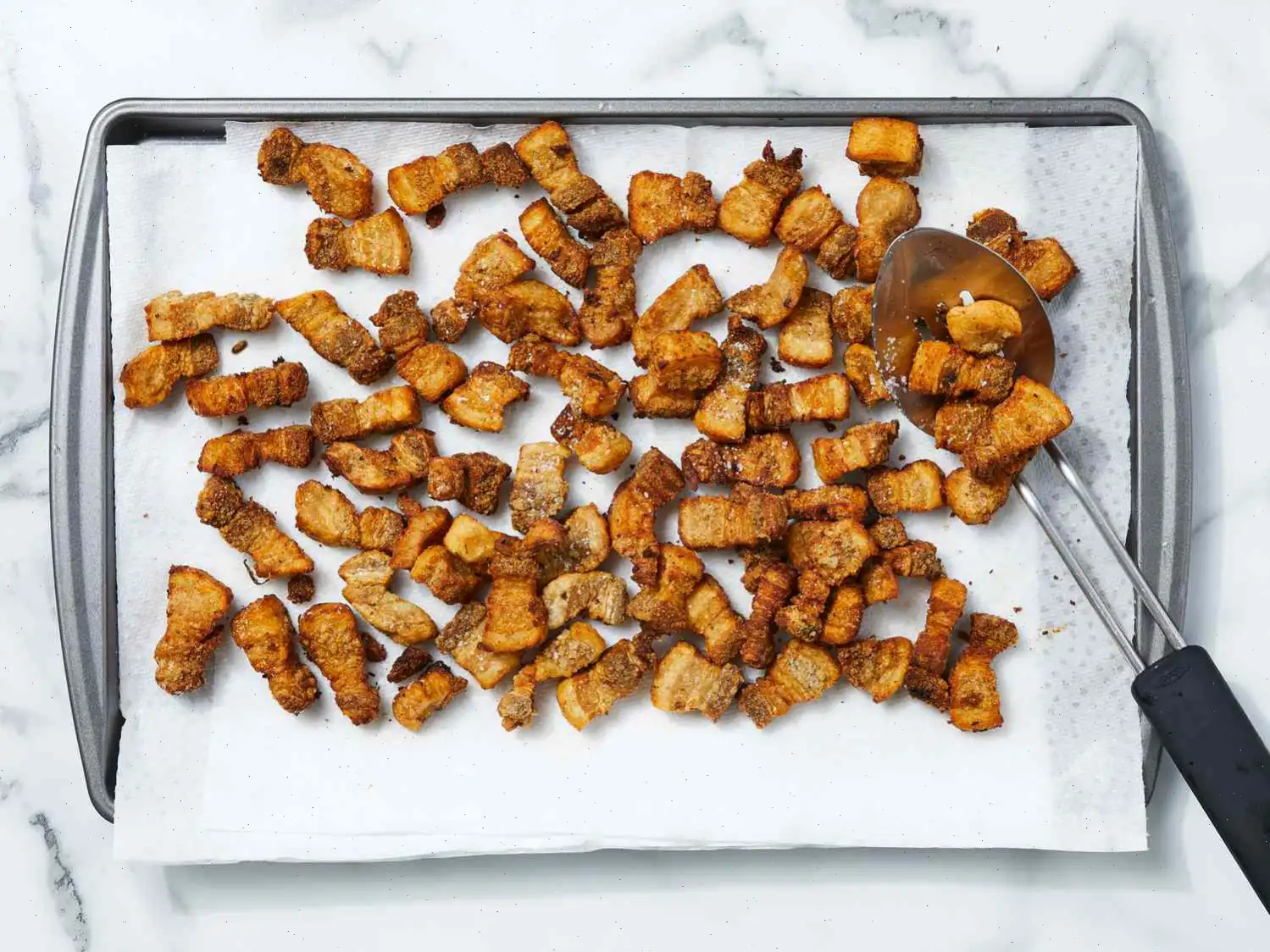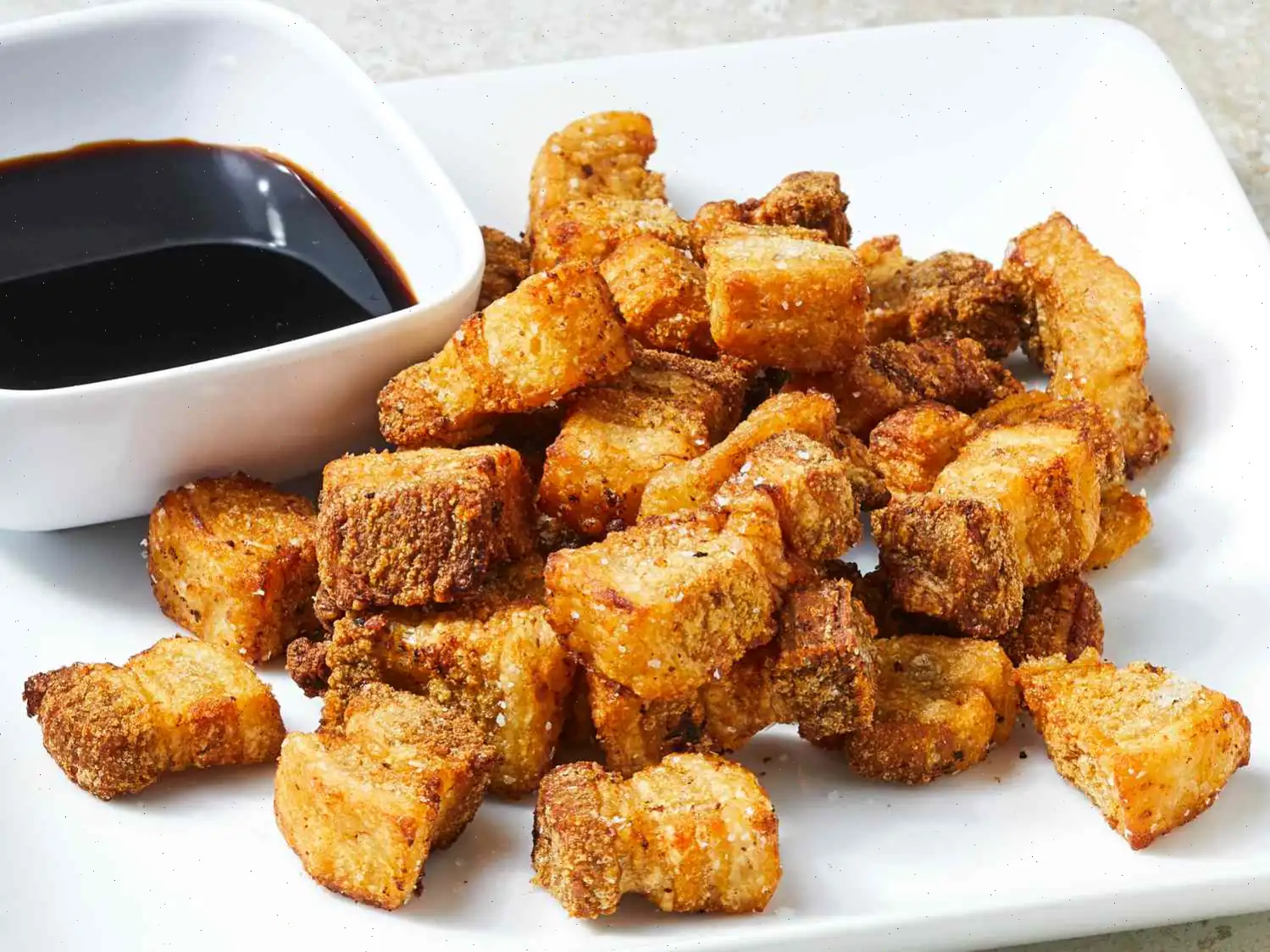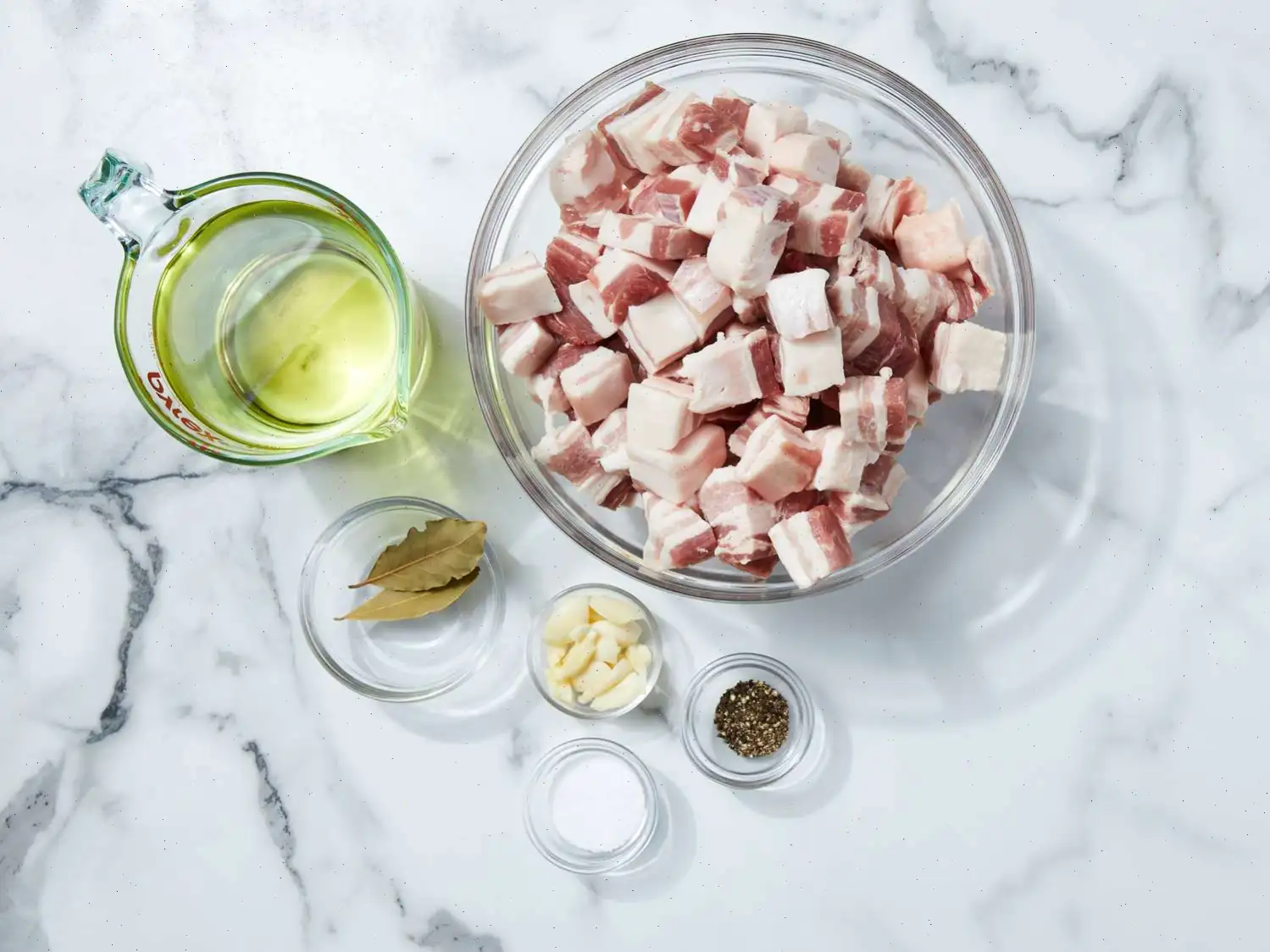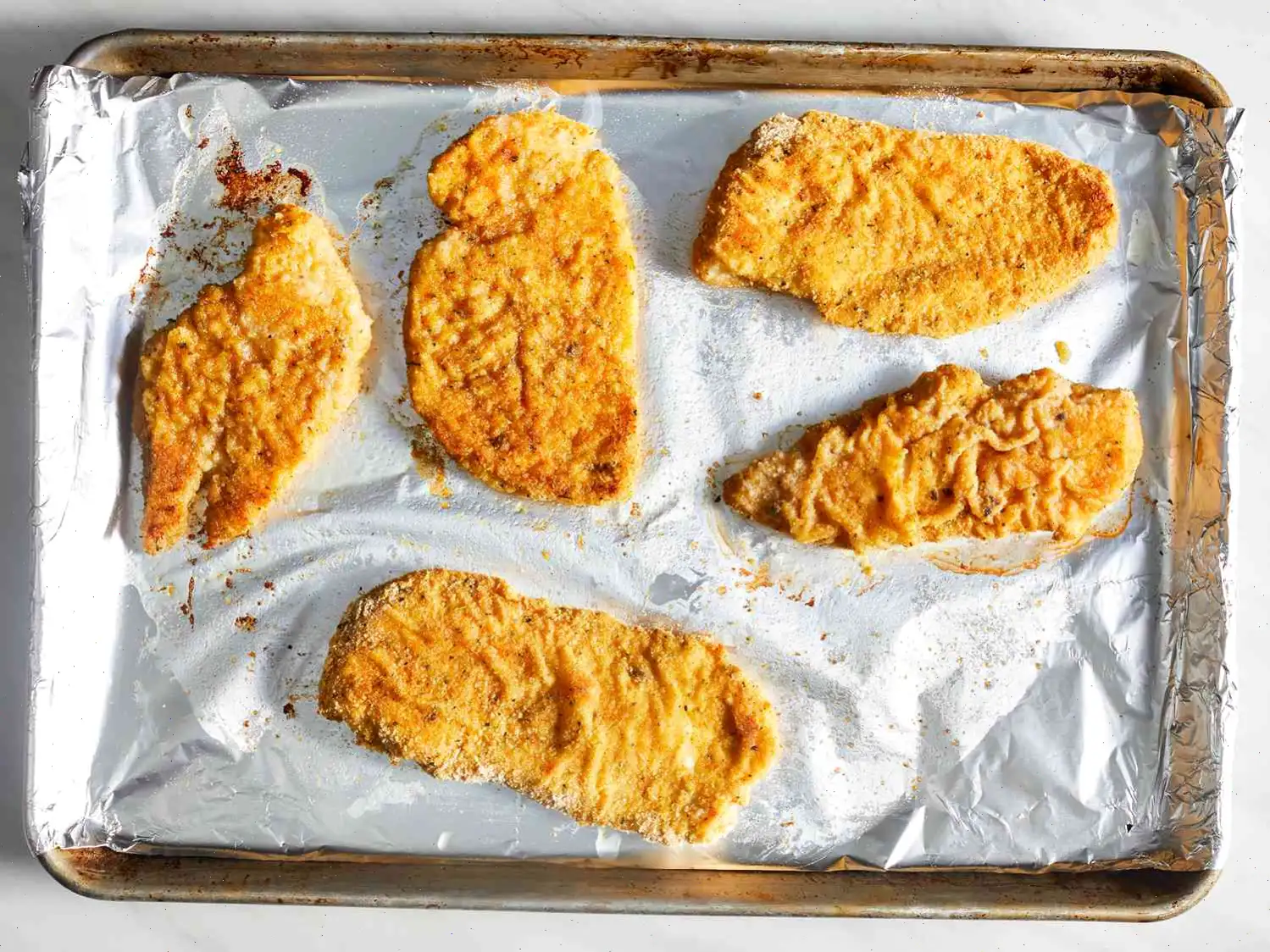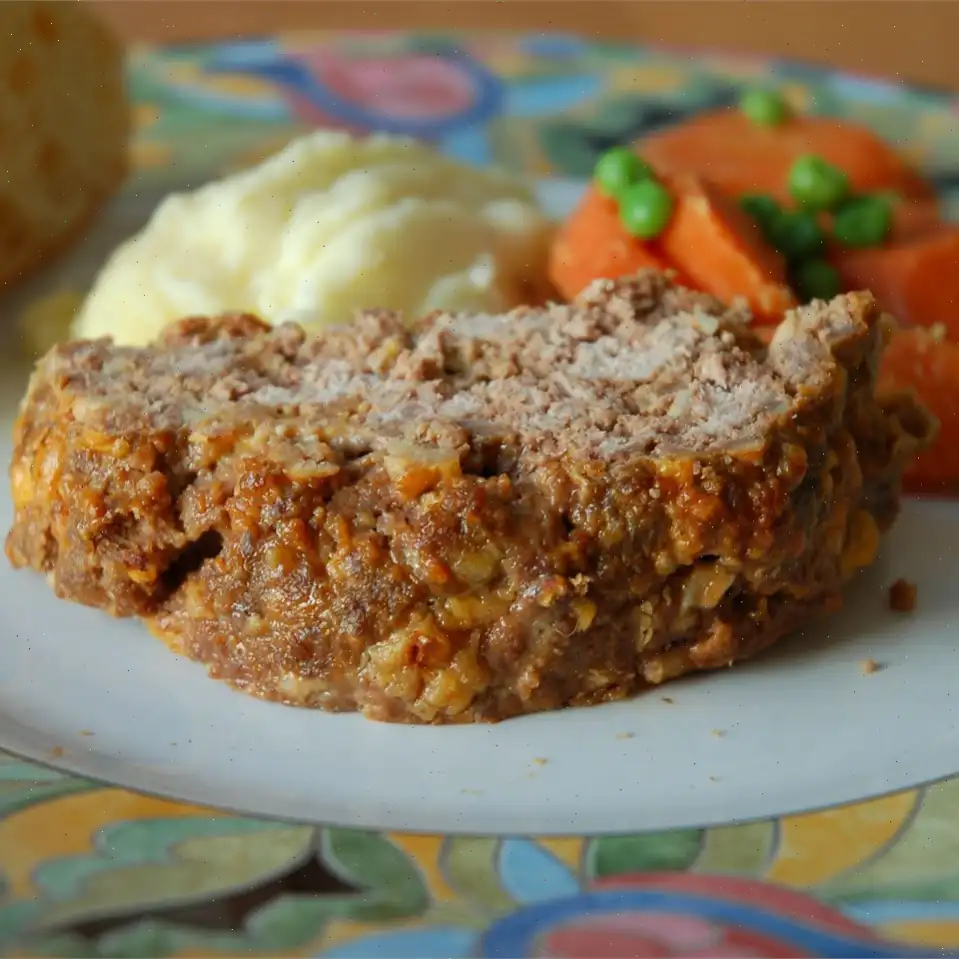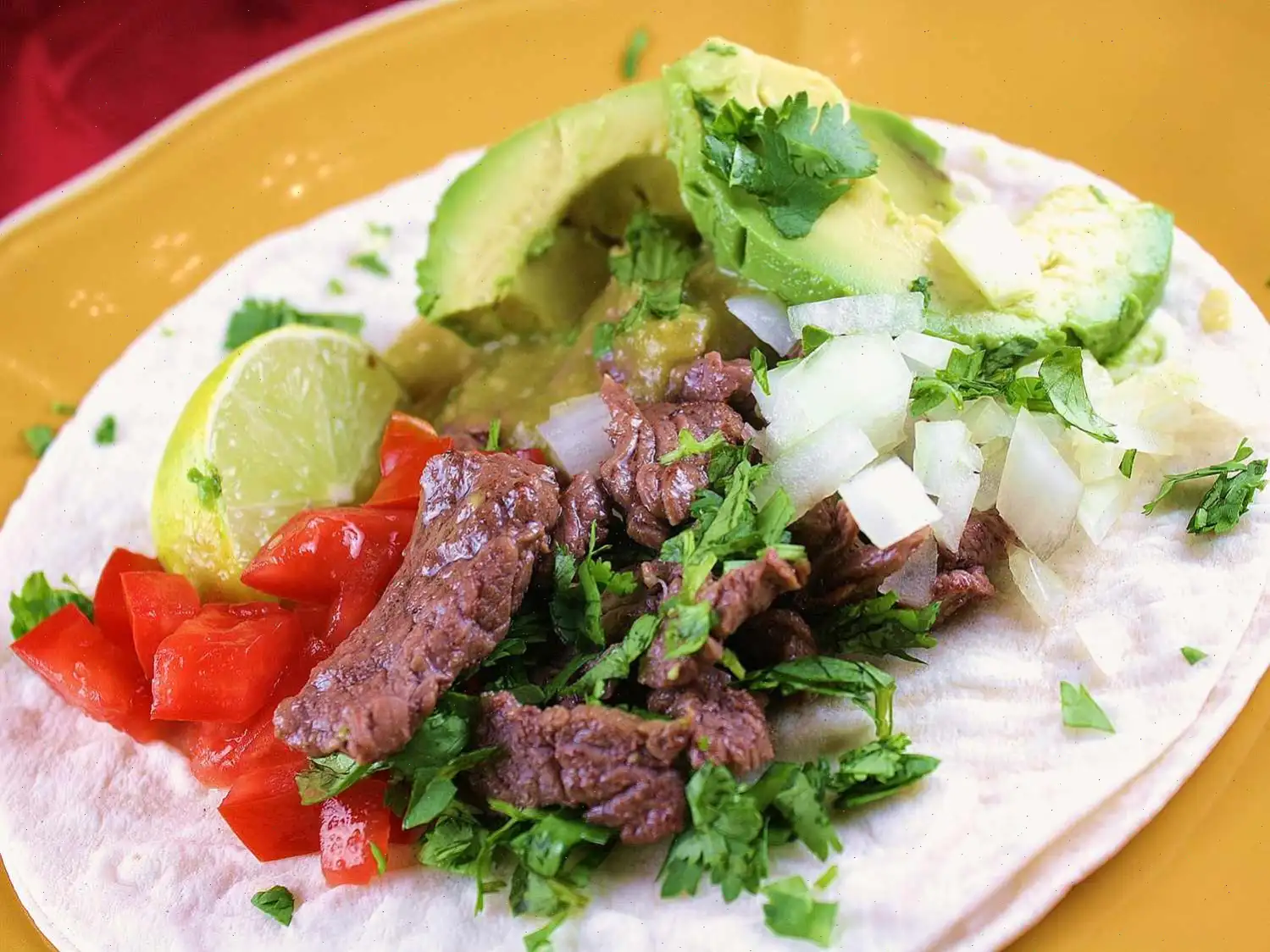
Filipino Lechon Kawali Recipe
Ingredients
This recipe was developed at its original yield. Ingredient amounts are automatically adjusted, but cooking times and steps remain unchanged. Note that not all recipes scale perfectly.
Original recipe (1X) yields 4 servings
- 1 pounds pork belly, cut into small pieces
- 3 cloves garlic, crushed
- 2 bay leaves
- teaspoon salt
- teaspoon ground black pepper
- 2 cups oil for frying, or as needed
Directions
Step 1: Gather all ingredients.
Step 2: In a skillet, combine pork belly, garlic, bay leaves, salt, and pepper. Pour in enough water to cover the ingredients. Bring to a boil.
Step 3: Reduce the heat and simmer until the pork skin is tender, about 35 to 45 minutes.
Step 4: Drain the pork and let it sit at room temperature until the pork has air-dried.
Step 5: Heat oil in a deep-fryer or large saucepan to 350F (175C).
Step 6: Fry the pork in the hot oil in batches until golden brown, about 3 to 5 minutes.
Step 7: Remove the fried pork using a slotted spoon and drain on a paper towel-lined plate.
Nutrition Facts (per serving)
| Amount Per Serving | Calories | 45g Fat | 2g Carbs | 21g Protein |
|---|---|---|---|---|
| Calories | 502 | 45g | 2g | 21g |
| Total Fat | 45g | 58% | ||
| Saturated Fat | 11g | 53% | ||
| Cholesterol | 62mg | 21% | ||
| Sodium | 1587mg | 69% | ||
| Total Carbohydrate | 2g | 1% | ||
| Dietary Fiber | 0g | 0% | ||
| Protein | 21g | 42% | ||
| Vitamin C | 1mg | 1% | ||
| Calcium | 14mg | 1% | ||
| Iron | 1mg | 6% | ||
| Potassium | 330mg | 7% |
* Percent Daily Values are based on a 2,000 calorie diet. Your daily values may be higher or lower depending on your calorie needs.
** Nutrient information is not available for all ingredients. Amount is based on available nutrient data.
(-) Information is not currently available for this nutrient. If you are following a medically restrictive diet, please consult your doctor or registered dietitian before preparing this recipe for personal consumption.

Lechon Kawali is a beloved Filipino dish made of crispy, deep-fried pork belly that is tender on the inside and perfectly crunchy on the outside. This dish is often served with a side of vinegar or soy sauce-based dipping sauce and is a favorite for many Filipino families during celebrations and gatherings.
History of Lechon Kawali
The history of Lechon Kawali is closely tied to the rich culinary traditions of the Philippines. Lechon, meaning "roast," has been a staple in Filipino cuisine for centuries. It originally referred to a whole roasted pig, but the term evolved to encompass various preparations of pork, including the popular Lechon Kawali. The "Kawali" refers to the wok-like pan used for frying, and it is typically made using pork belly, a cut that provides both flavor and tenderness when cooked properly. It is believed that this dish was influenced by Chinese cooking techniques, particularly the use of frying methods, which were integrated into Filipino cuisine through centuries of trade and migration.
Regional Variations
While Lechon Kawali is popular throughout the Philippines, regional variations exist based on local tastes and available ingredients. In some regions, the pork is marinated with spices like lemongrass or annatto, which imparts additional flavor and color to the meat. In other areas, the pork belly may be seasoned more simply, with just garlic, salt, and pepper. The method of serving can also vary, with some regions opting for a more elaborate dipping sauce made with vinegar, soy sauce, and chopped onions, while others may prefer a simple squeeze of calamansi (Filipino lime).
Differences from Similar Dishes
Lechon Kawali is often compared to other Filipino pork dishes like Lechon Baboy (whole roasted pig) or Crispy Pata (deep-fried pork hock). The key difference lies in the cut of meat and cooking method. Unlike Lechon Baboy, which is roasted on a spit over a fire, Lechon Kawali is fried in a pan, giving it a crunchier texture. Meanwhile, Crispy Pata uses the pork hock and is typically deep-fried for a longer period to achieve a similar crispy exterior. The distinctiveness of Lechon Kawali lies in its ability to offer a combination of crispy skin and tender, juicy meat, which is difficult to replicate in the other preparations.
Where to Find Lechon Kawali
Lechon Kawali is commonly served in Filipino households, restaurants, and street food stalls, especially during festive occasions such as birthdays, weddings, and holidays like Christmas and New Year. It can be found at almost any Filipino restaurant worldwide, often served alongside other dishes such as adobo, lumpia, or sinigang. In the Philippines, it is also a popular choice for casual dining or "tapsilogan" (places that serve breakfast meals) where it is paired with garlic rice and egg.
Interesting Facts About Lechon Kawali
- The term "Lechon Kawali" is derived from "Lechon" (meaning roasted pig) and "Kawali" (the Filipino term for a frying pan).
- In some parts of the Philippines, the pork belly is boiled first with bay leaves and garlic before being fried, which helps tenderize the meat and infuse it with flavor.
- Lechon Kawali is often served with a vinegar-based dipping sauce or soy sauce with crushed garlic, offering a sharp contrast to the richness of the fried pork.
- The dish has become so popular that it is often featured in Filipino cooking contests and food festivals.
Whether you're enjoying it at a family gathering or at a local eatery, Lechon Kawali remains a standout dish in Filipino cuisine, beloved for its crunchy texture and savory flavors.
FAQ about Filipino Lechon Kawali Recipe
Comments
Steven Jackson
12/05/2023 09:40:18 AM
This recipe was a breeze to whip up and the end result was absolutely flawless!
Janet Nguyen
03/04/2024 10:23:53 AM
Delicious Taste! My wife's top pick from home! So simple to prepare. And most importantly, my wife was over the moon about it!
Melissa Mitchell
10/24/2022 03:49:45 PM
It has been some time since I last savored lechon kawali! This recipe was simple and delightful to prepare.




